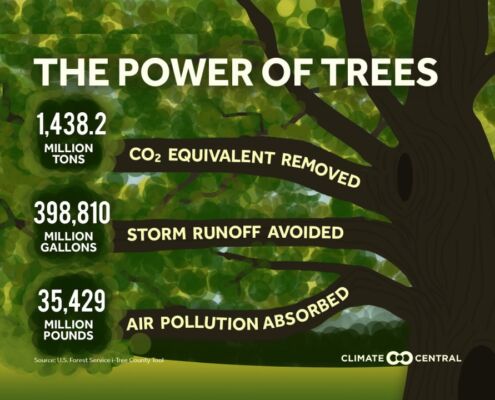Carbon Sequestration Explained
Many countries and organizations are looking for ways to achieve carbon neutrality or net-zero emissions, making carbon sequestration a key focus area.
With growing concerns about climate change and its impacts, there is increased attention on strategies to
reduce greenhouse gas emissions, including carbon sequestration.
Carbon sequestration has been in the news frequently for a variety of factors. The combination of climate change concerns, policy developments, technological advances, corporate initiatives, and global events has contributed to the frequent coverage of carbon sequestration by media outlets around the globe.
The first factors centers on climate change concerns. With growing concerns about climate change and its impacts, there is increased attention on strategies to reduce greenhouse gas emissions, including carbon sequestration. Many countries and organizations are looking for ways to achieve carbon neutrality or net-zero emissions, making carbon sequestration a key focus area.

Other reasons carbon sequestration has been at the forefront of many media and policy conversations include:
Policy and Regulation – Governments around the world are implementing policies and regulations to address climate change, including incentives for carbon sequestration projects. This has led to increased coverage of carbon sequestration in the news as policymakers and stakeholders discuss the role of these projects in meeting climate goals.
Technological Advances – There have been significant advancements in carbon sequestration technologies, such as carbon capture and storage (CCS) and direct air capture (DAC). These technologies are becoming more feasible and cost-effective, leading to increased interest and coverage in the news.
Corporate Initiatives – Many companies are committing to reducing their carbon footprint and are investing in carbon sequestration projects as part of their sustainability efforts. This has led to increased media coverage of corporate initiatives related to carbon sequestration.
Natural Solutions – Alongside technological solutions, there is also growing recognition of the importance of natural solutions for carbon sequestration, such as reforestation, soil carbon sequestration, and wetland restoration. These natural solutions are gaining attention in the news as effective ways to remove CO2 from the atmosphere.
Global Events and Reports – Events such as the United Nations Climate Change Conferences (COP) and reports from organizations like the Intergovernmental Panel on Climate Change (IPCC) often highlight the importance of carbon sequestration in addressing climate change, leading to increased media coverage.
Why Carbon Sequestration Matters to Communities
Climate Change Mitigation – Carbon sequestration helps reduce the amount of carbon dioxide (CO2) in the atmosphere, which is a major contributor to climate change. By capturing and storing carbon, communities can help mitigate the impacts of global warming.
Air Quality Improvement – Plants absorb CO2 during photosynthesis and release oxygen, which improves air quality. Carbon sequestration through reforestation and afforestation projects can help enhance the health and well-being of community members by providing cleaner air.
Protecting Ecosystems – Carbon sequestration can help protect and restore ecosystems, such as forests and wetlands, which provide critical services like water purification, erosion control, and habitat for wildlife.
Economic Benefits – Some carbon sequestration practices, such as sustainable forestry or agricultural practices, can provide economic benefits to communities. These practices can create jobs, improve soil health, and enhance the overall resilience of local economies.
Resilience to Climate Change – Increasing carbon sequestration can enhance the resilience of communities to the impacts of climate change, such as extreme weather events, by preserving natural resources and reducing vulnerability.
Overall, carbon sequestration plays a crucial role in helping communities address climate change, improve environmental quality, and build more sustainable and resilient societies.
Project EverGreen’s Clean Air Calculator
It is easy to underestimate the power of green spaces that grow around us and, if we are lucky, surround the places where we call home, go to work, and enjoy our leisure time.
A new, online calculator will change the way we think about green spaces we often take for granted. Project EverGreen is the exclusive licensee of the Clean Air Calculator™ in the U.S.
The Clean Air Calculator, powered by Project EverGreen, is a web-based mapping tool that measures the positive environmental impact of plants—specifically lawns, trees, and shrubs on a property.
The calculator will be used by lawn and landscape professionals, park directors, golf course superintendents, commercial property owners, sports fields managers, homeowners, and others.
Plants not only capture carbon but also provide us with cleaner, cooler air. Lawns, trees, and shrubs make up green spaces but so do other plants like flowers and gardens. They attract people, wildlife, bees, insects, and microscopic organisms.
Underneath, soil helps grow and support green spaces with its own ecosystem of roots, earthworms, microbes, insects and even animals, like moles and gophers.
While all those things contribute to environmental health, our calculator uses three land covers—lawns, trees, and shrubs to measure the benefits of green space.
The calculator helps one visualize the environmental impact of land cover on a property by measuring four environmental health factors:
- Clean Air
- Carbon Sequestered
- People Impacted
- Km Offset
The Clean Air Calculator combines geographic information system (GIS)-based interactive maps with a scientific data model to identify the value of actual greenspace in cities, neighborhoods, communities, and individual properties.




